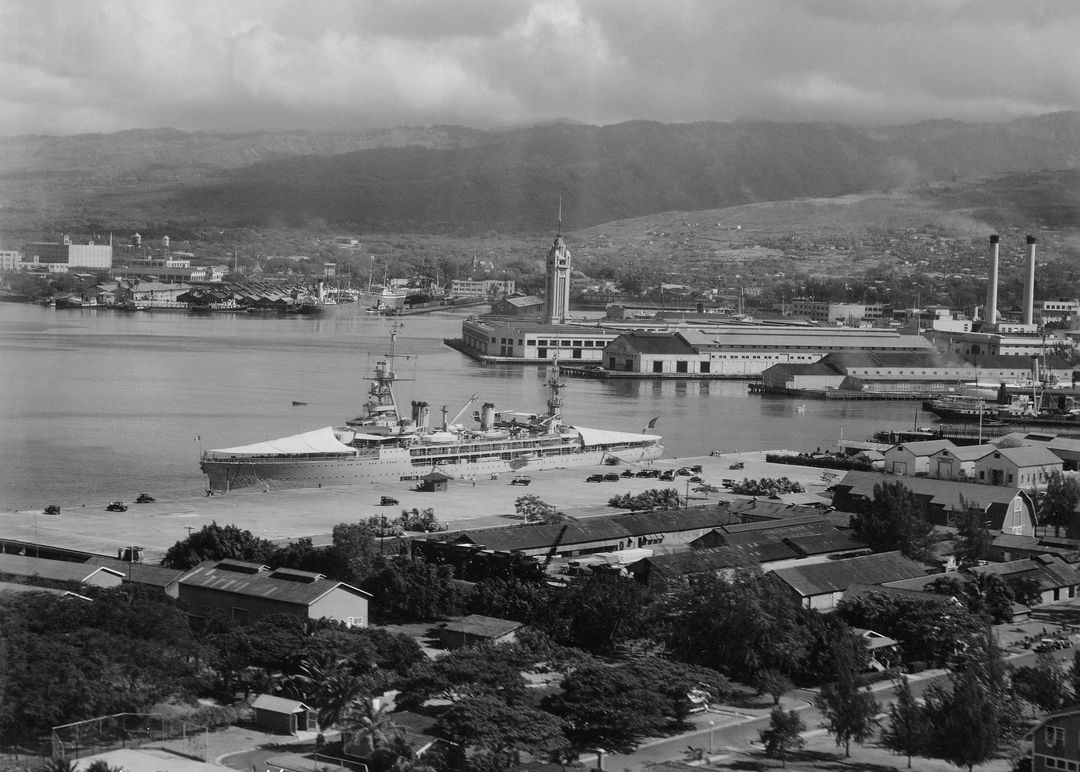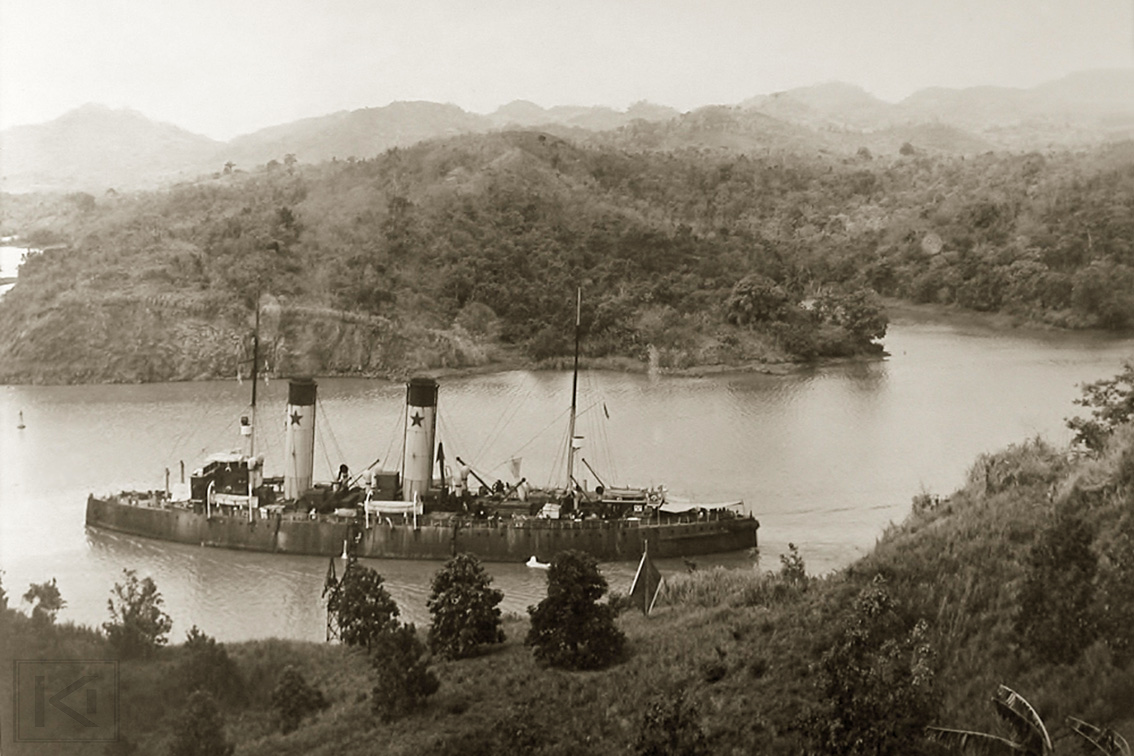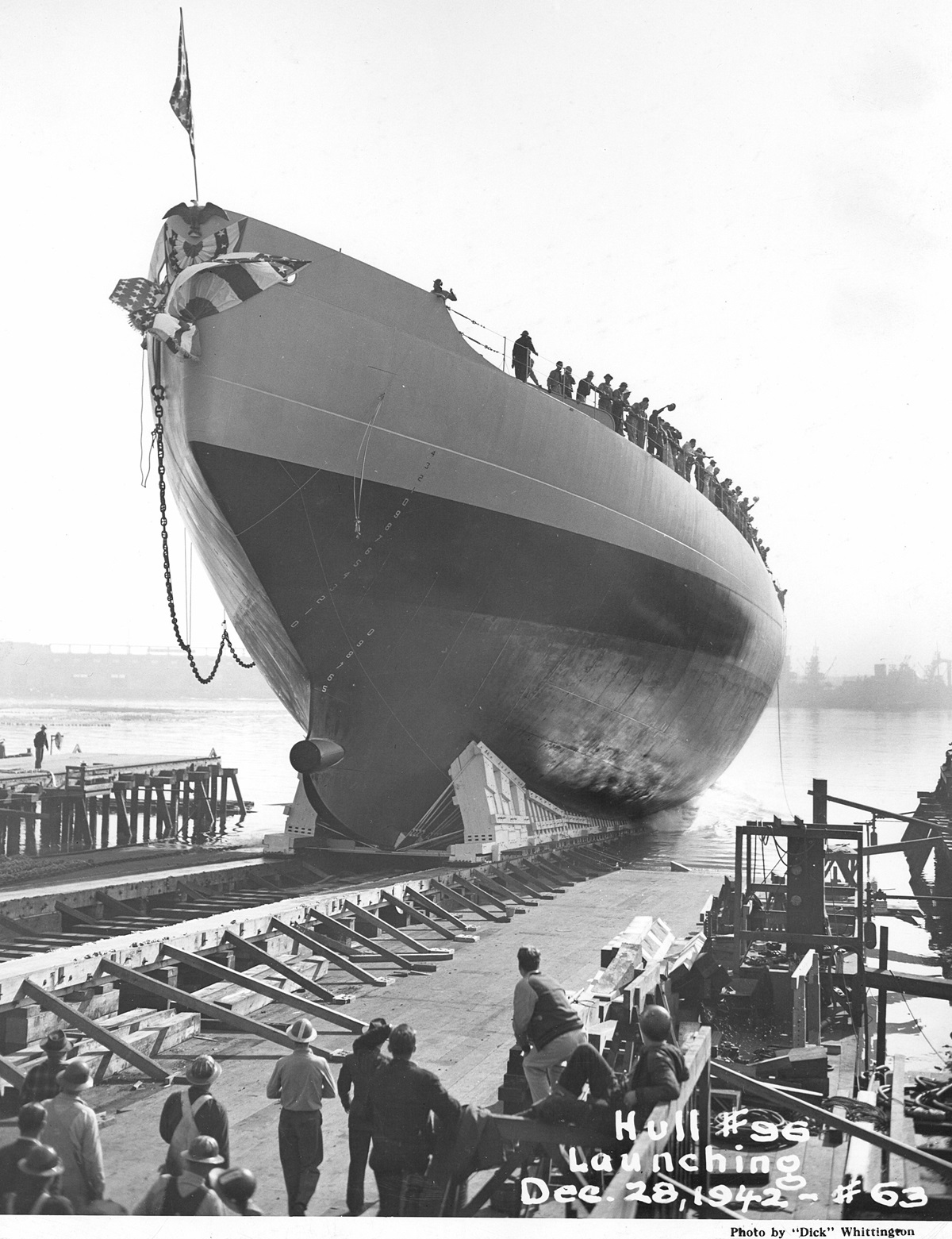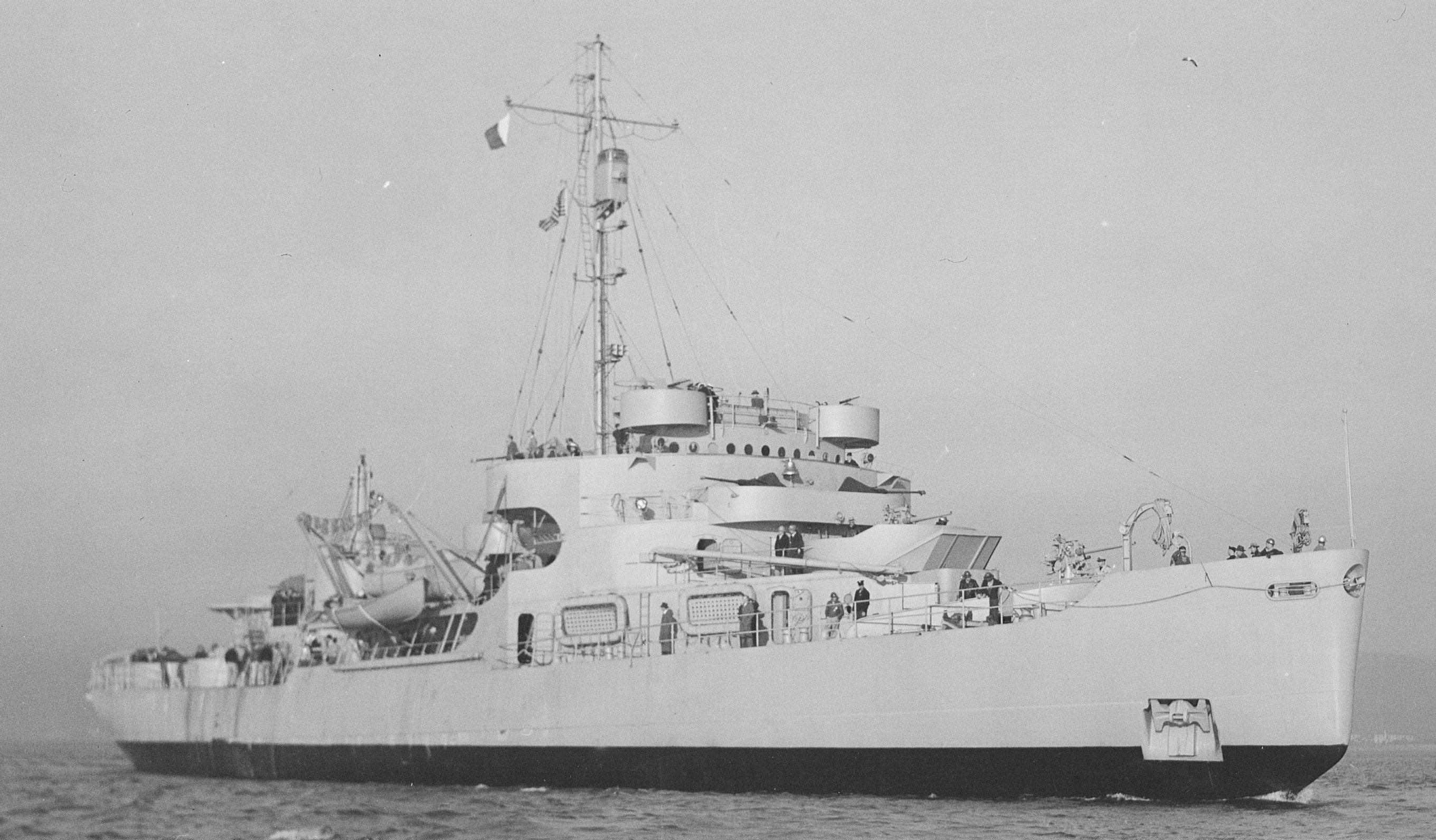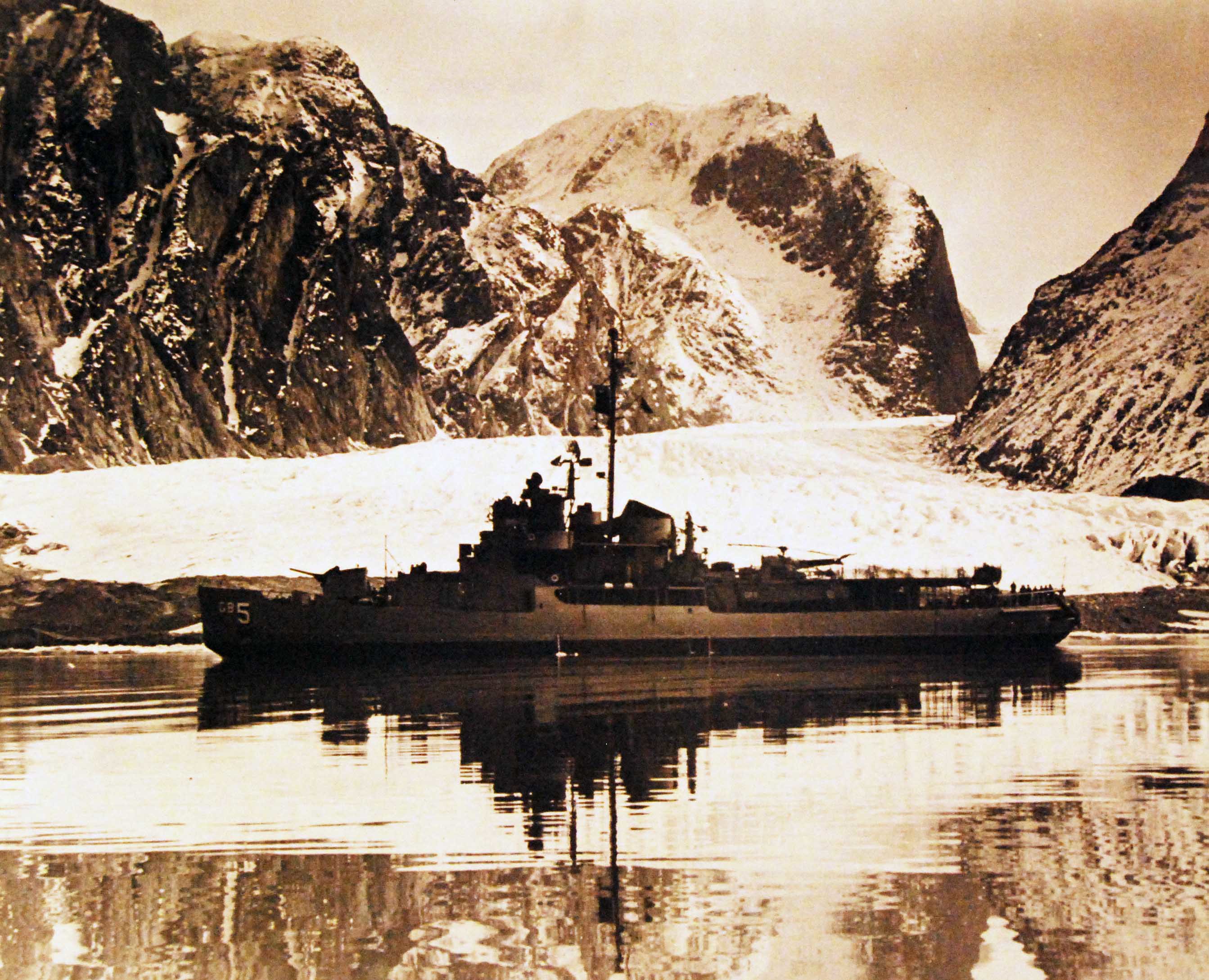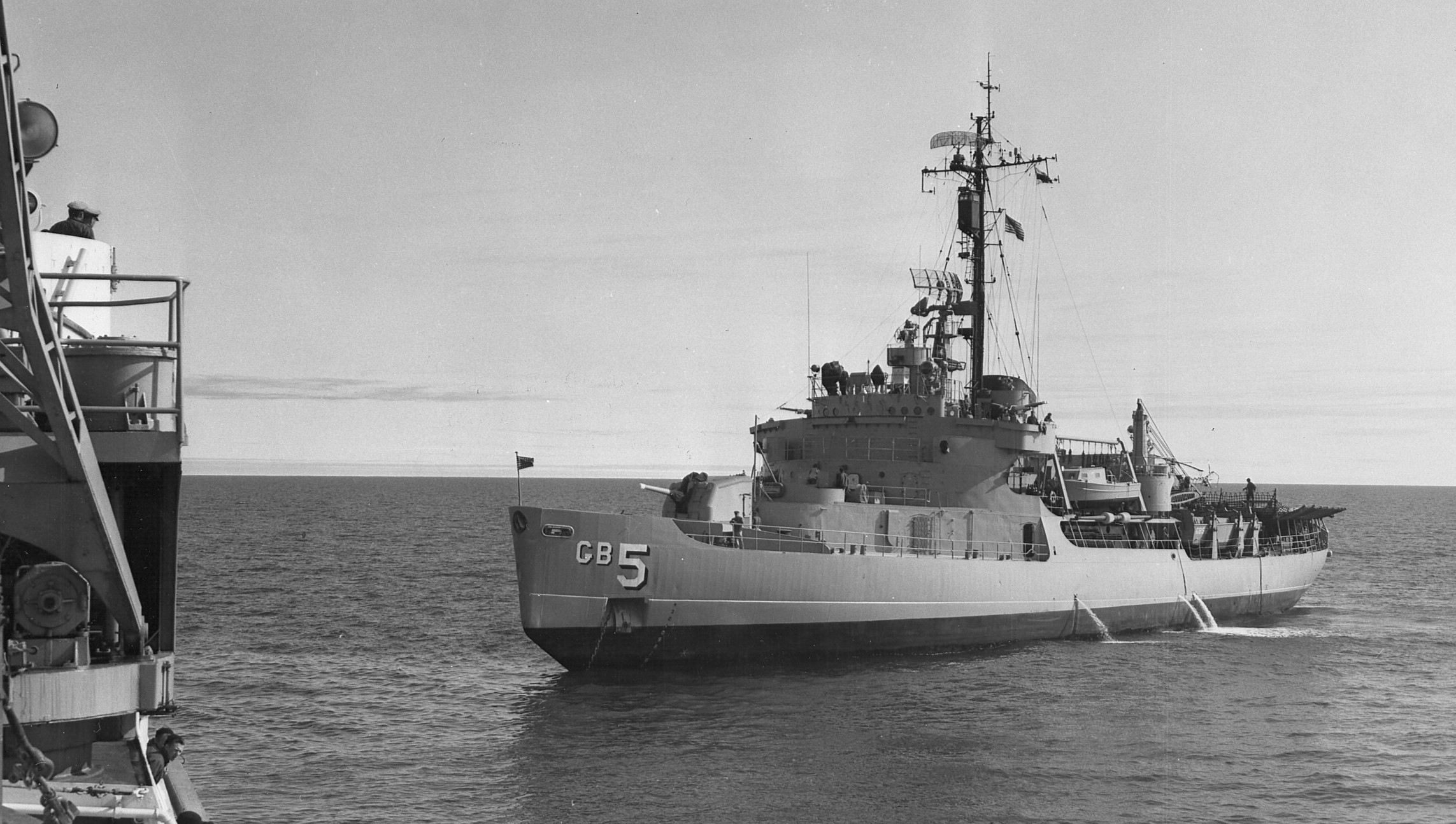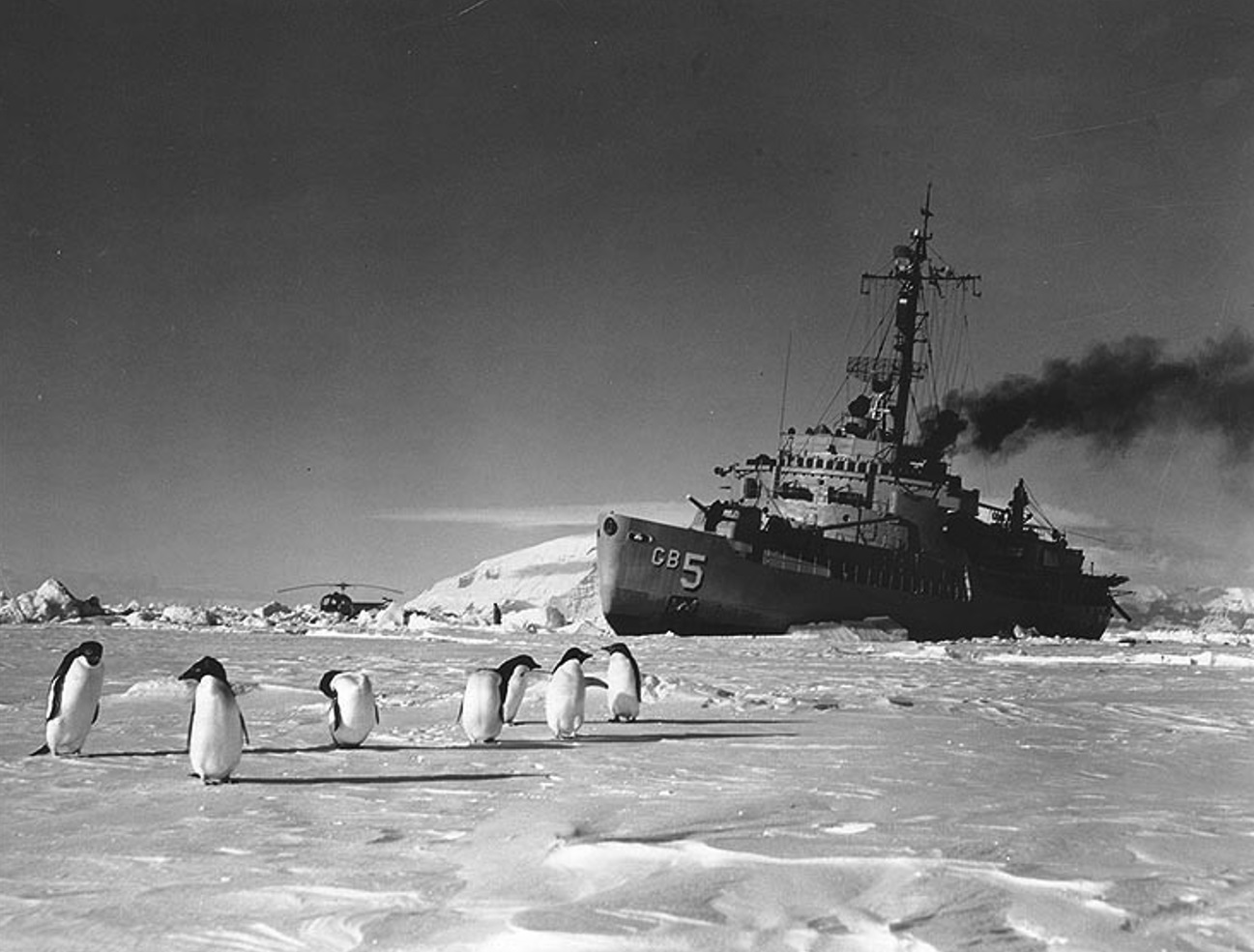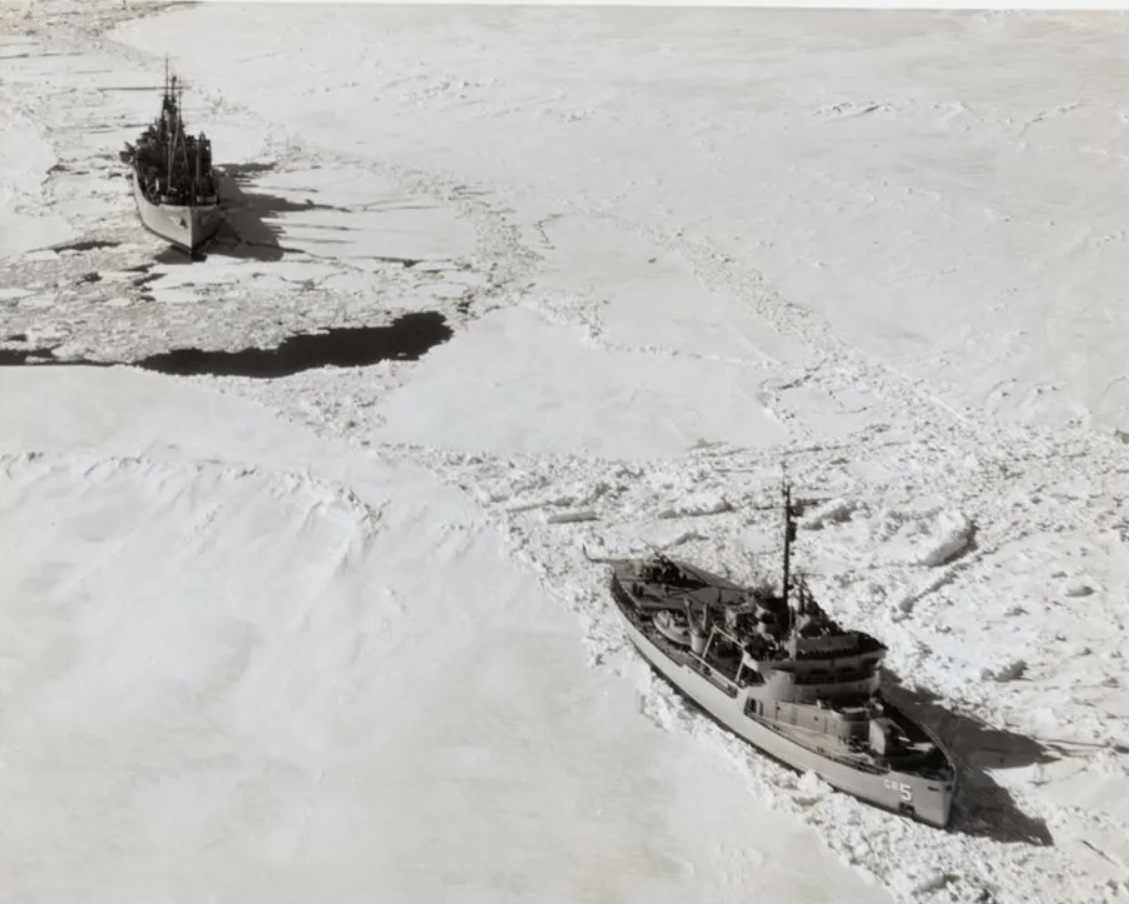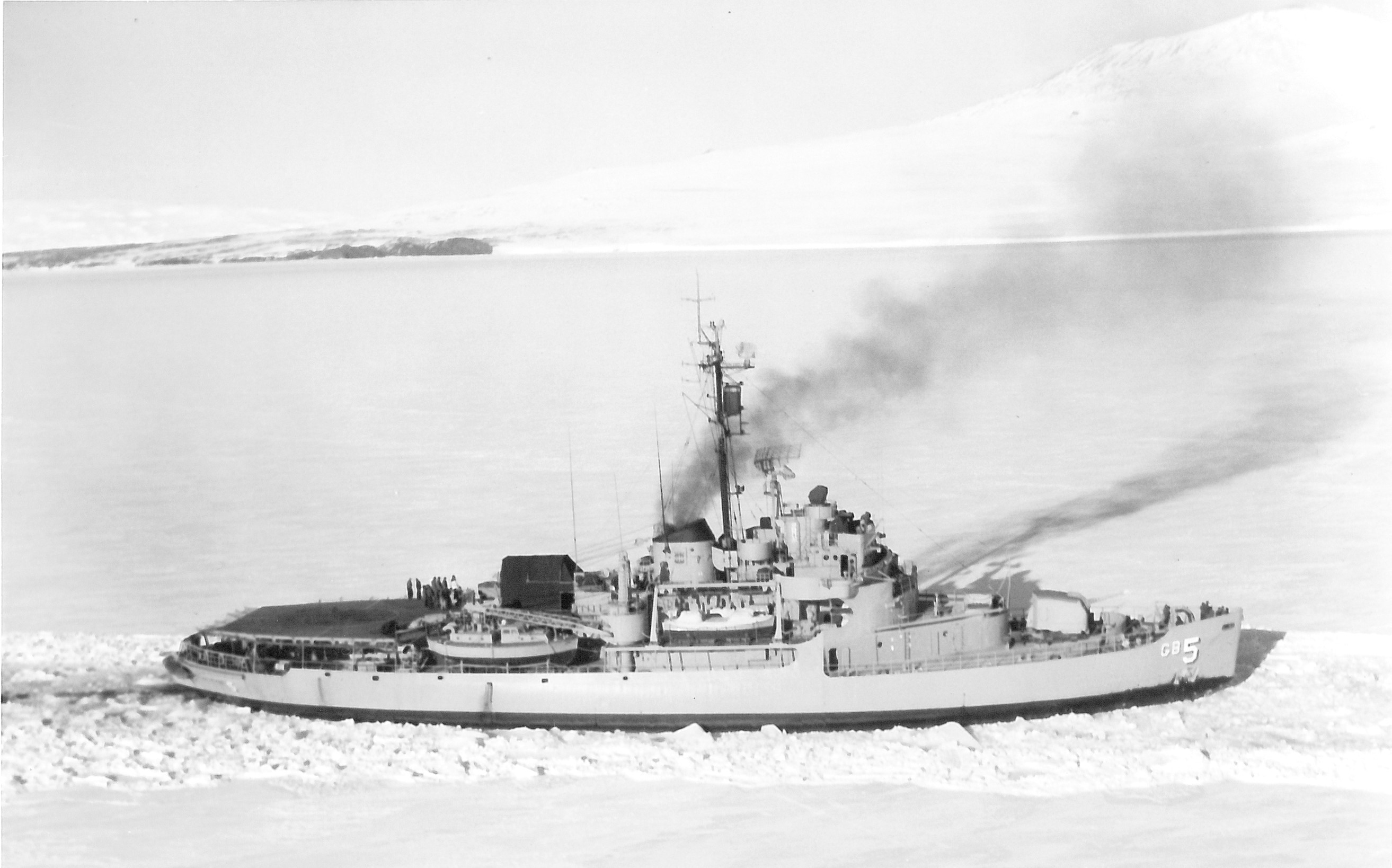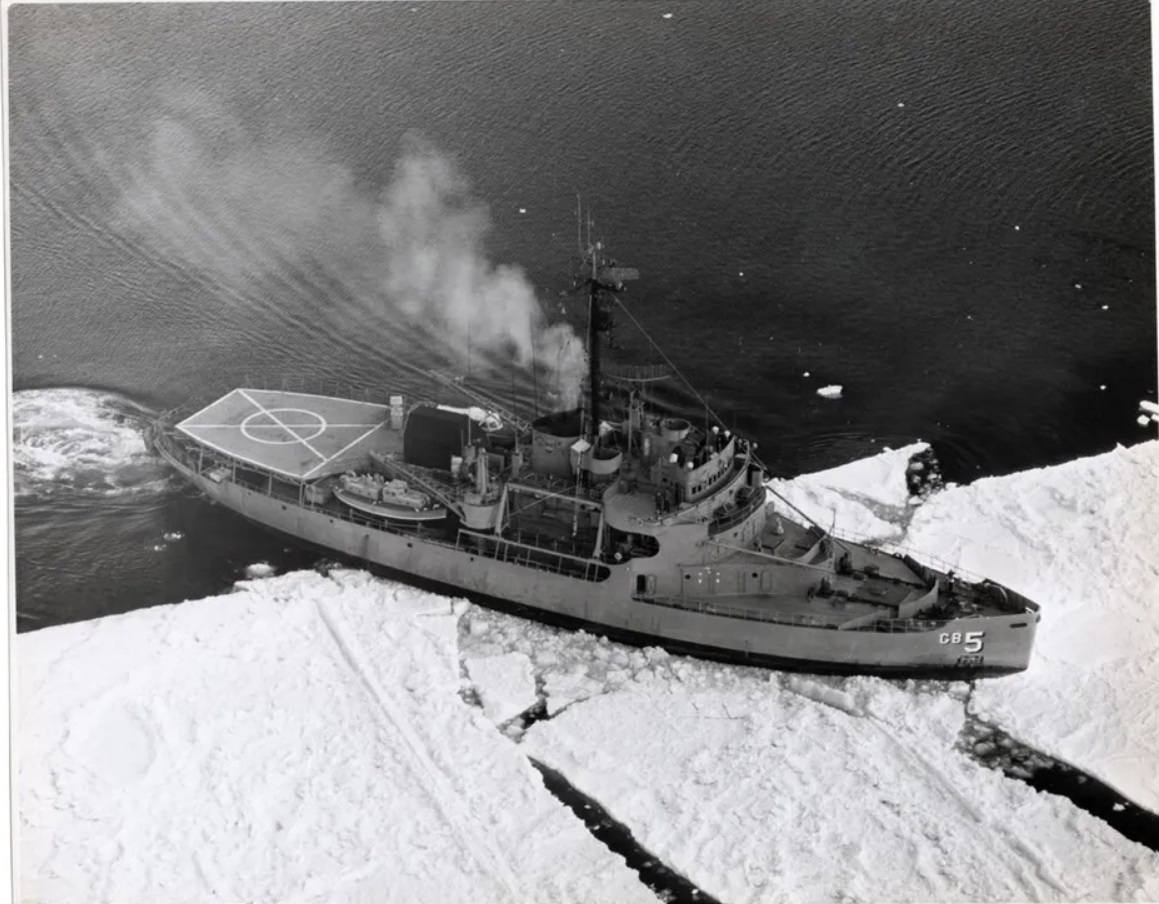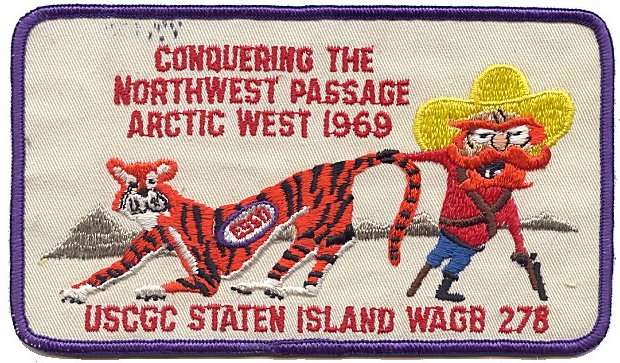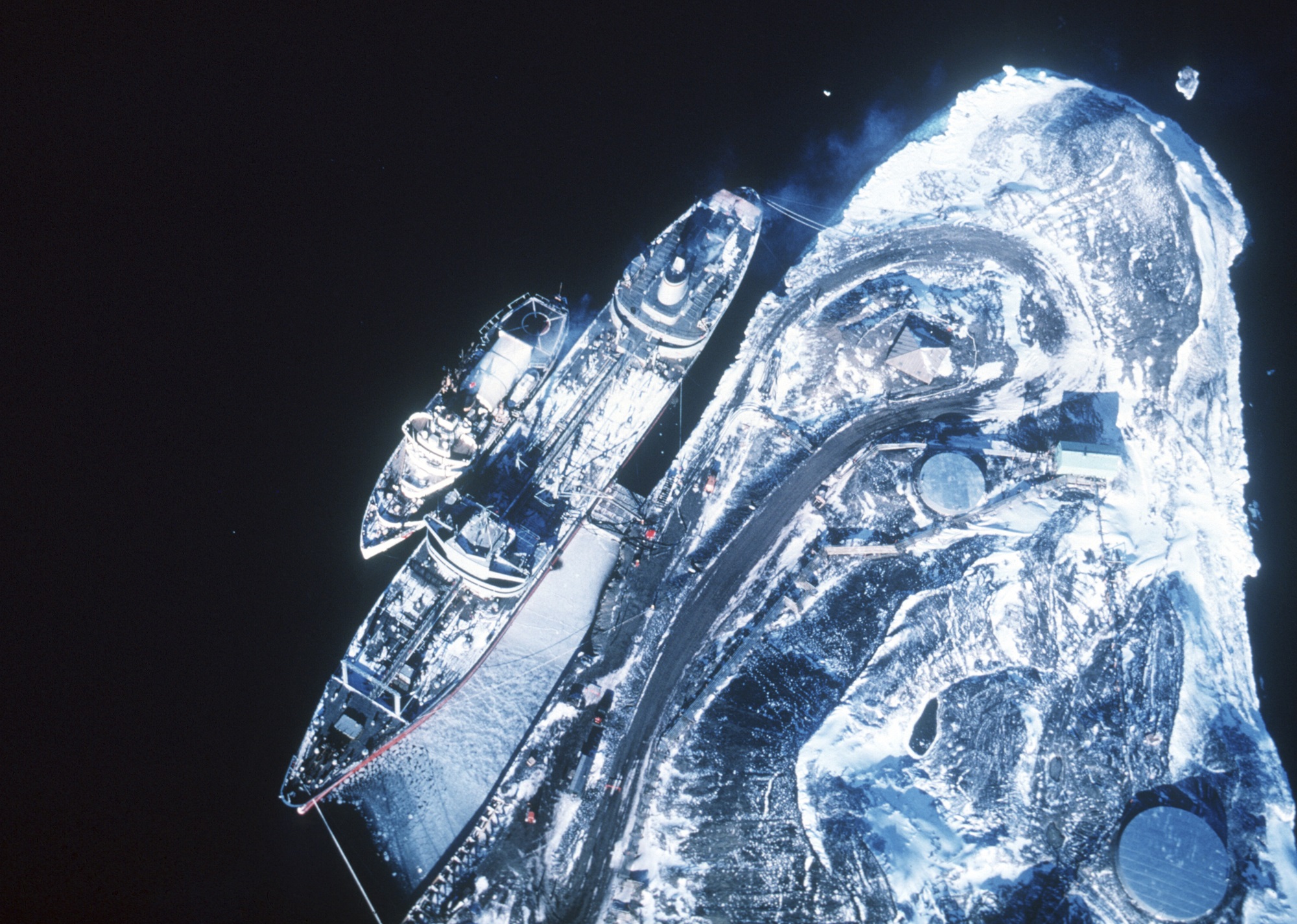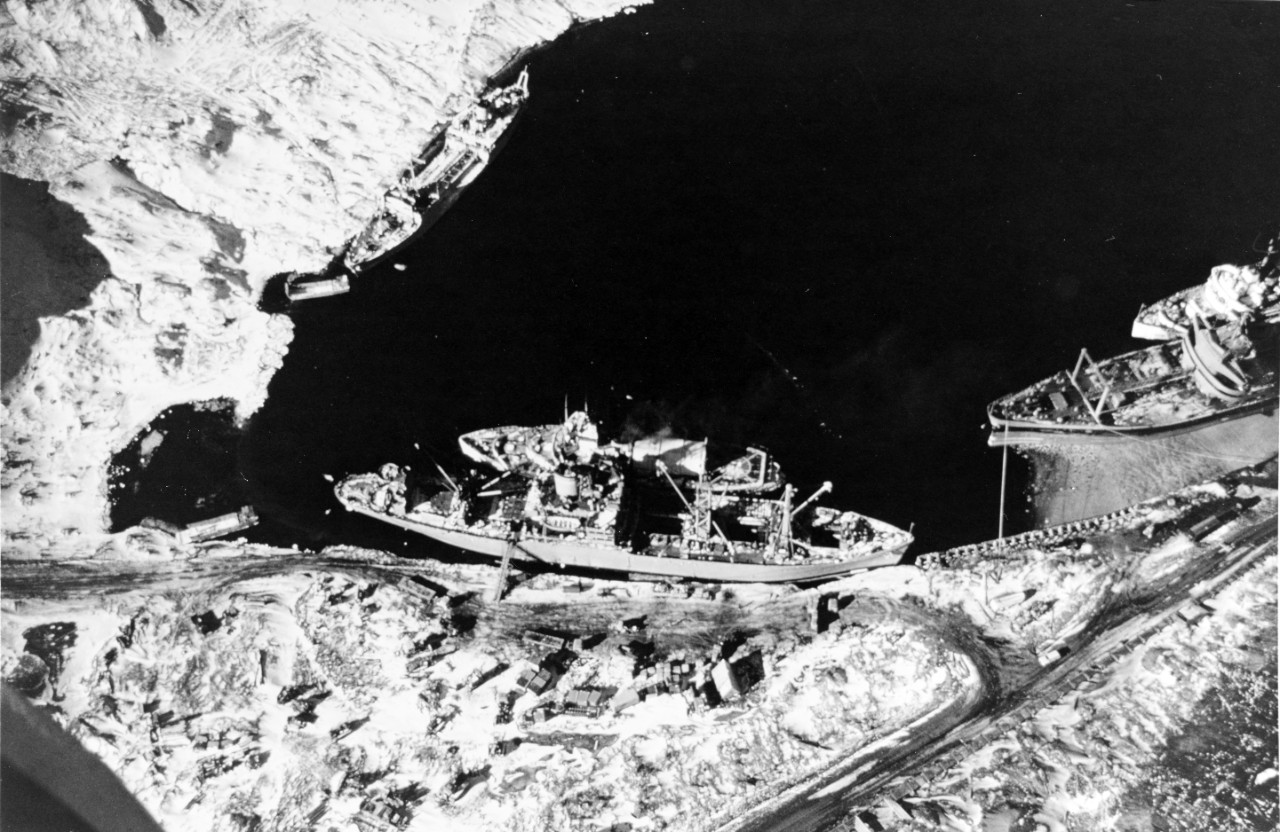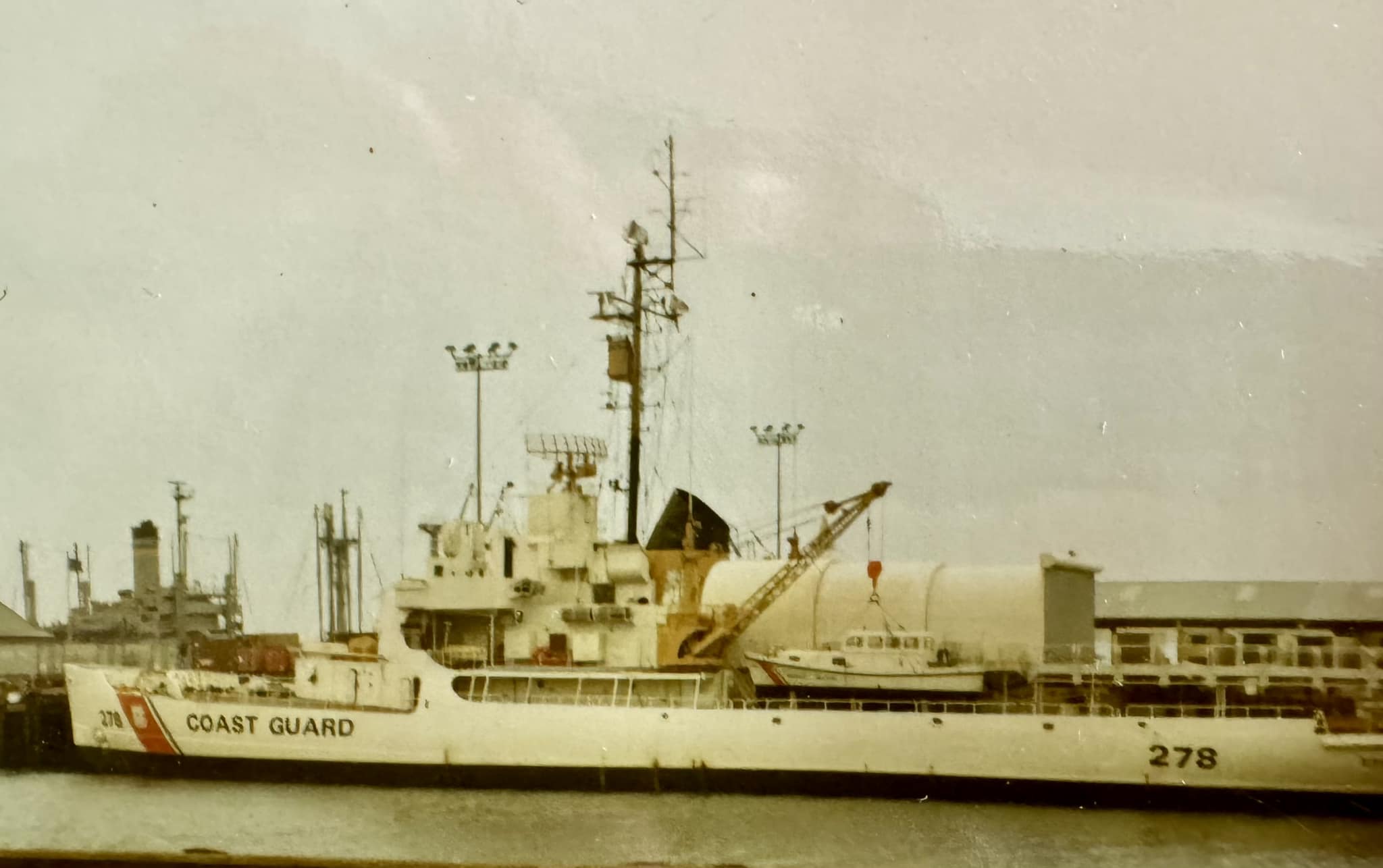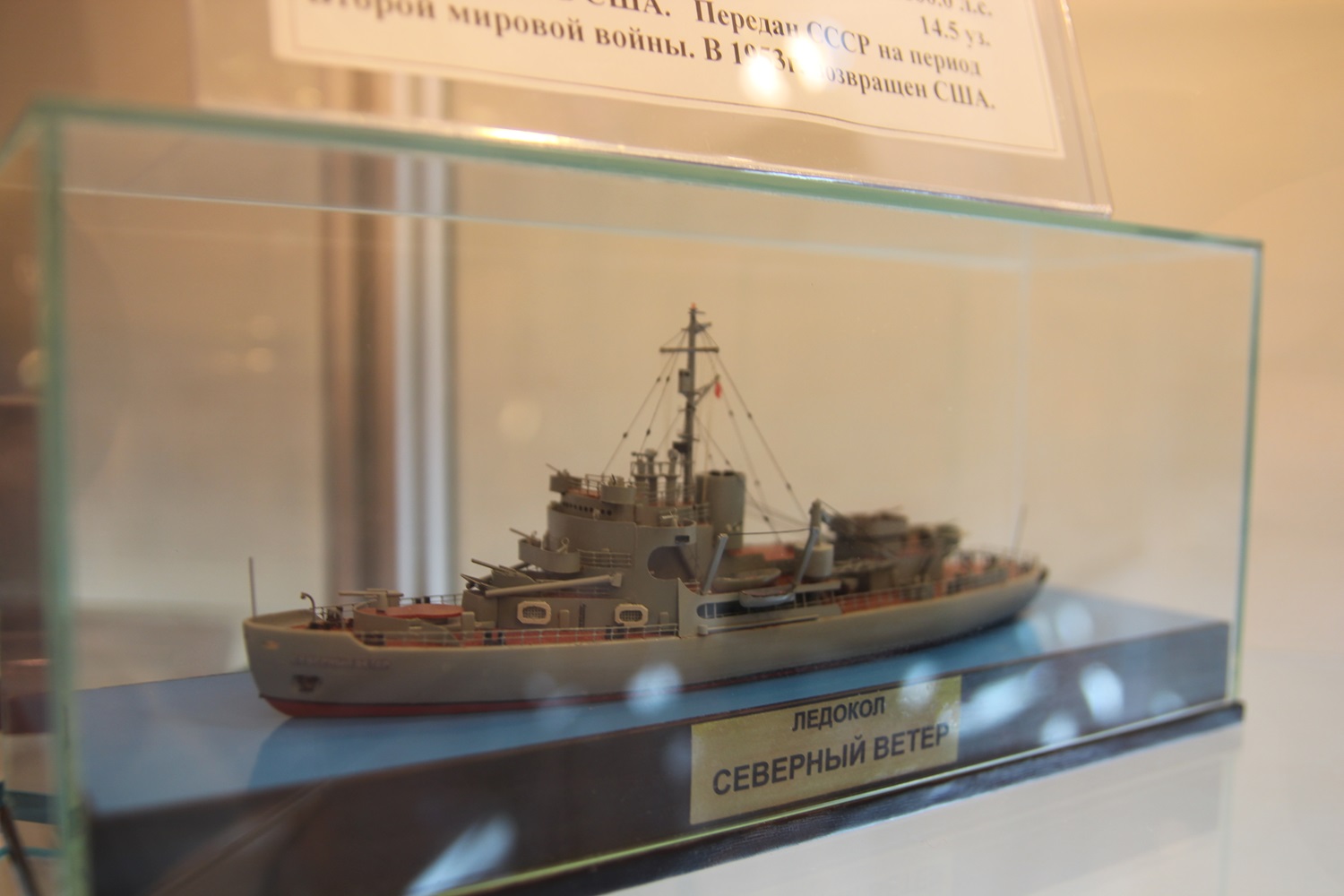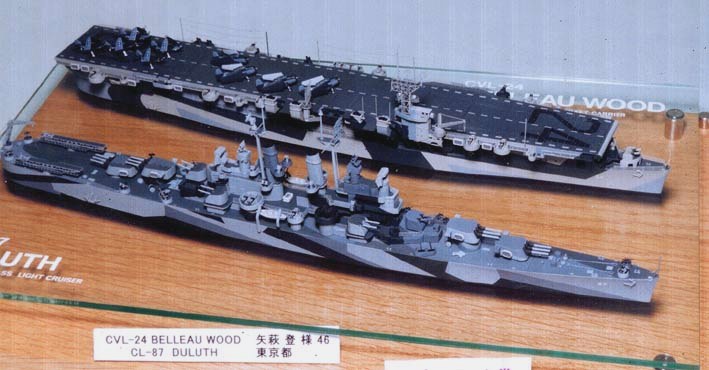Warship Wednesday Feb. 14, 2024: La Jeanne
Here at LSOZI, we take off every Wednesday for a look at the old steam/diesel navies of the 1833-1954 period and will profile a different ship each week. These ships have a life, a tale all their own, which sometimes takes them to the strangest places.- Christopher Eger
Warship Wednesday, Feb. 14, 2024: La Jeanne
Above we see the stern of the beautiful French croiseur école Jeanne d’Arc as she sat in port at Freemantle’s North Quay, while visiting Australia in February 1962 on her 26th cadet cruise. Don’t let her fine lines fool you, she had survived a war and, within a year of this photo, would ride out a trio of back-to-back rogue waves that could have swamped just about any hull ever made by man.
Christened on Valentine’s Day 1930, Jeanne was a vessel any warship fan could love.
Meet Jeanne
By 1927, the quaint old armored cruiser Jeanne d’Arc, a 36-boilered coal-eating leviathan whose six tall smutty funnels led to the nickname “L’étui à cigarettes,” was getting very long in the teeth indeed. The only real reason she was still in service at all was that she had been re-tasked in 1908 for use as a training cruiser. While since the end of the Great War, she had completed nine lengthy officer cadet winter cruises– typically leaving Brest in September or October and returning around the following July– her 11,500 tons displacement was a drag on treaty limits and her armament (a pair of Modèle 1893 7.6″/40s and a dozen equally old low-angle 5.46-inchers) was obsolete.
Rather than replace her by retasking a younger cruiser on hand, it was decided to create a new, purpose-built, training cruiser that looked good– she would sail the world every year representing the Republic, after all– and had a modern armament, engineering suite, and commo suite which would translate into realistic preparation for future officers continuing into the fleet.
With almost cruise ship/large yacht lines, she ran 525 feet overall through 21 bulkheads with a raked bow and thin 57-foot beam while she displaced under 6,500 tons at standard load due to the fact she fundamentally carried no armor other than some light (20-25mm) plating around her conning tower and protecting her four main gunhouses/loading rooms.
This allowed a small plant of just four Penhoët fuel-oil boilers and two sets of Parsons geared steam turbines, generating 32,500 shp on four shafts, to make 25 knots flank speed with ease and cruise at 19 knots with just half her plant going. She broke 27.84 knots on trials. Meanwhile, two Renault diesel gennies kept her electrical net alive and boilers offline while in port. She had a 5,000nm cruising radius which allowed an easy Med Cruise or Atlantic crossing.
Her armament consisted of a main battery of eight 155 mm/50 (6.1″) Modèle 1920 guns— the same as used in the new Duguay-Trouin-class light cruisers and in the casemated guns on the aircraft carrier Bearn.

Cadets having fun on the 155 mm guns of the French training cruiser Jeanne d’Arc. Note the gun houses are thinly armored, with just an inch of plate, and oversized to aid in training evolutions.

Now compare to the same model guns in the bow turrets on the Trouin-class cruiser Lamotte-Picquet. Note the director and large searchlight above it. Besides the Trouin class, the French only used the 6.1″/50 Model 1920 on the training cruiser Jeanne D ‘Arc and the carrier Bearn.
Her secondary and tertiary DP AAA batteries were very light four 75mm/50cal M1927 singles and two 37mm/50cal M1925 singles, as they were basically just for instruction. This was augmented by two 21.7-inch torpedo tubes. A very modern design, she carried two catapults and floatplane facilities, typically for CAMS.37 flying boats.
She was designed to carry 20 officer-instructors and 156 cadet midshipmen for extended cruises in addition to her normal 572-man crew (28 officers, 120 petty officers, 424 quartermasters and sailors).
Laid down at A.C. de la Loire et Penhoët, St-Nazaire as Yard No. M6 on 31 August 1928, she was launched on Valentine’s Day 1930– and which point the old cruiser which was still in service was renamed Jeanne d’Arc II to keep the two ships straight– and commissioned on 14 September 1931, kicking off a long career.
The Salad Days of Interbellum Cruising
Her plankowner skipper, Capt. André Amédée Abel Marquis (who later, as a vice admiral in 1942, would earn certain fame/infamy for ordering the scuttling of the French fleet at Toulon), would take Jeanne out on her first world cruise, a tour of South America that stretched well into 1932.
One of the ship’s junior officers in her gunnery department on this inaugural cruise was LT Jacques-Yves Cousteau, a fellow with a keen interest in diving.

Jeanne d’Arc, with extensive tropical awnings covering almost her entire form, was photographed in the Canal Zone on January 21, 1932, soon after completion. This photograph was taken by the U.S. Fleet Air Base, Coco Solo, Canal Zone, from an aircraft at 875 feet altitude. NH 89076
She would continue this pattern, crossing into the Pacific, and lapping the globe.

Jeanne d’Arc in the Gaillard Cut, Panama Canal, likely photographed by the USN for ONI purposes in 1934. Note her gun houses are oversized for aid in training. NH 89077
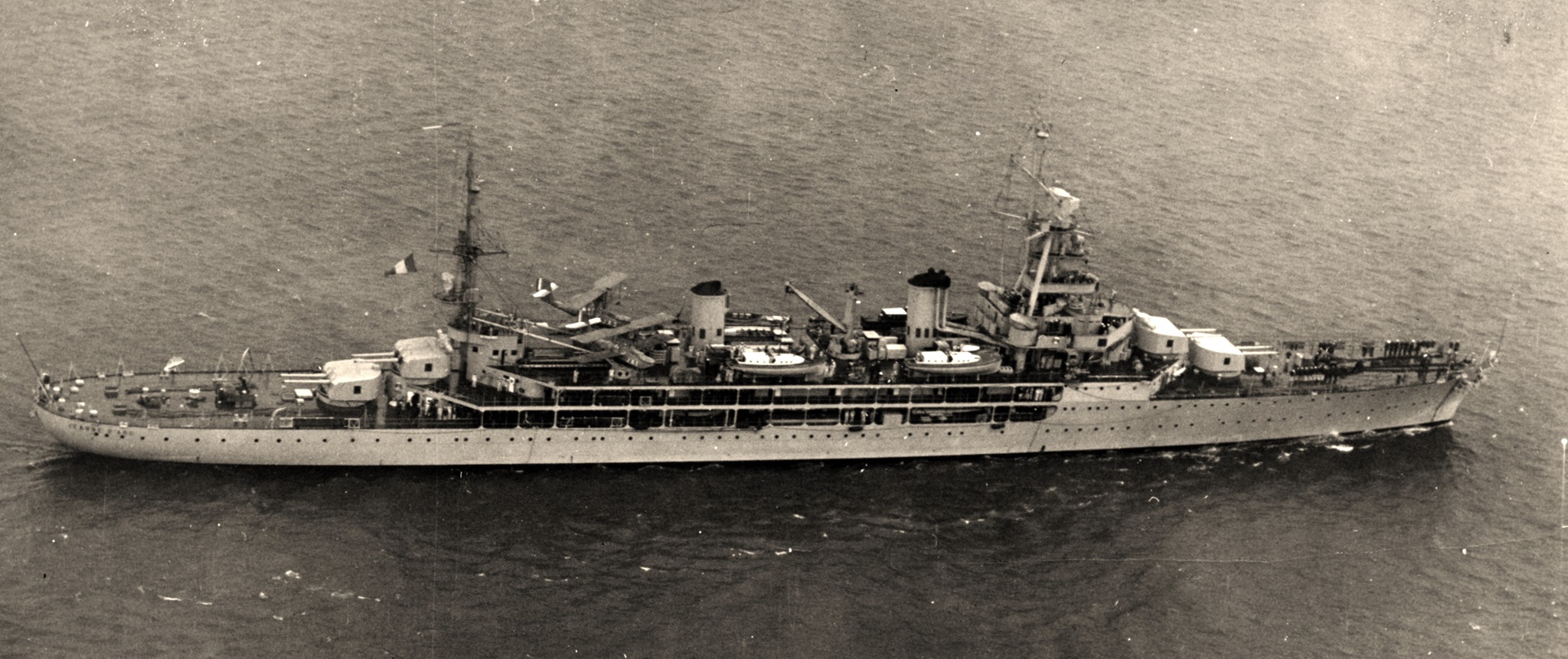
Jeanne d’arc photographed on December 8, 1934 off San Diego, California, by a U.S. Navy Aircraft. Note her cats are turned. NH 89078

French cruiser Jeanne d’Arc at Vancouver January 9, 1935, by Walter E Frost. City of Vancouver Archives CVA 447-2336
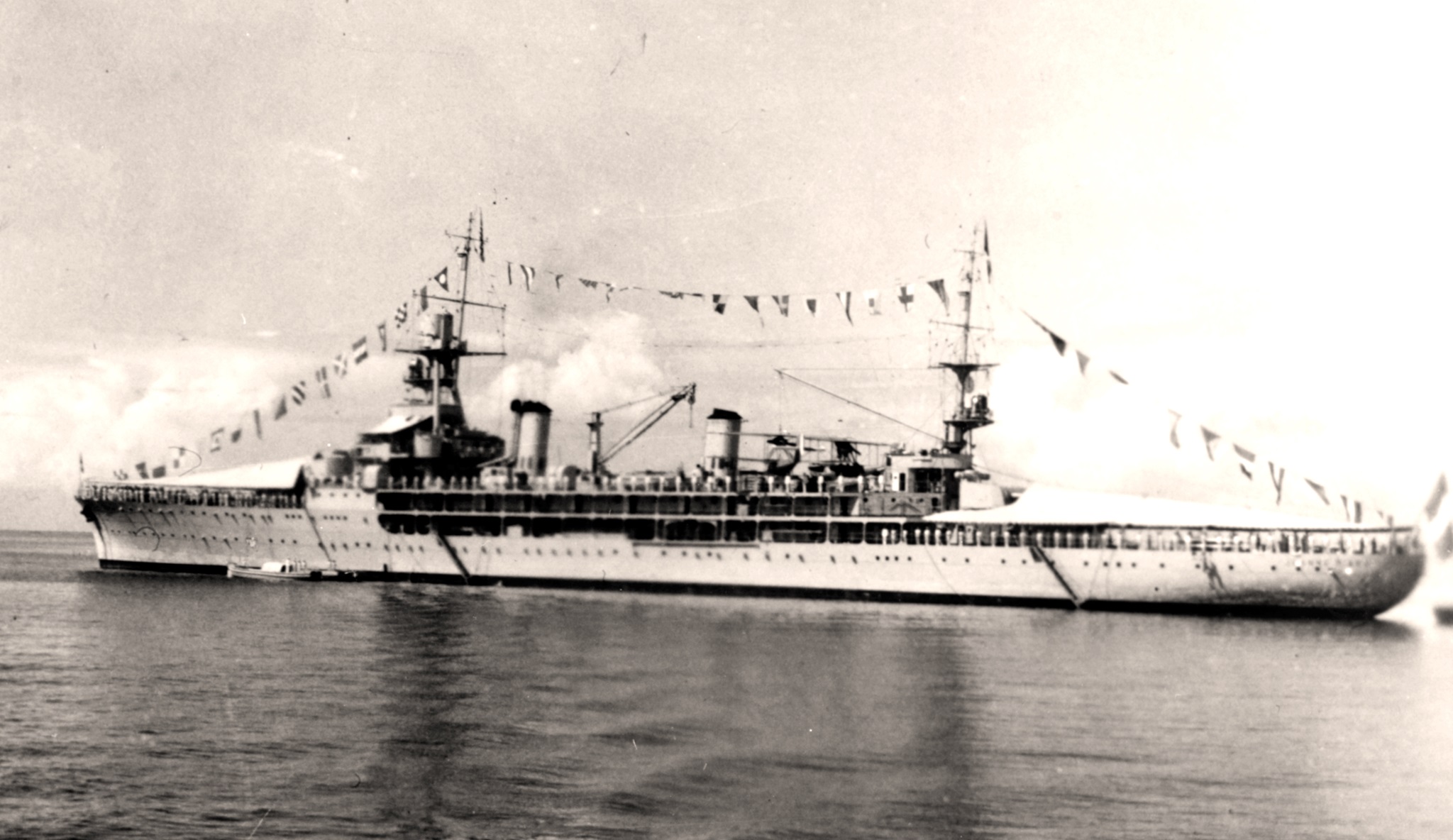
French cruiser Jeanne d’Arc rendering honors to President Franklin D. Roosevelt aboard USS Indianapolis (CA-35), 11 December 1936. Indianapolis is carrying President Franklin D. Roosevelt on his “Good Neighbor” cruise to South America. NH 68180
War!
Although a love boat of sorts, Jeanne was fast and cruiser-like, with a decent main armament, a pair of seaplanes, and a couple of torpedo tubes. Sure, if she got in a surface engagement, couldn’t take much damage and still fight due to the fact she had almost no armor protection and she was in serious trouble in the event of an air attack (although she had been bolstered by four twin 13.2mm Hotchkiss AAA mounts in 1935), but she could still serve at least as effectively as an armed merchant cruiser in such roles as searching for blockade runners and Axis surface raiders.
Assigned to the Atlantic Squadron at Brest, Jeanne spent the first nine months of the war in a series of short patrols with an eye peeled for German merchant ships trying to make for home via the North Sea and the Bay of Biscay.
In May, with the Battle of France underway and not going too well for Paris, Jeanne was tasked, along with the light cruiser Émile Bertin, to take a run of gold from the Bank of France to Canada for safekeeping, just in case. Once in the Atlantic, the two cruisers joined with the carrier Bearn, with her skipper since May 1939, Capt. Pierre-Michel Rouyer, promoted to rear admiral with his flag on our subject. They arrived at Halifax on 1 June.
Meanwhile, her former junior gunnery officer, LT Cousteau, by then a more senior gunnery officer aboard the cruiser Dupleix, was preparing to bombard Italian territory for Operation Vado, his first taste of combat.
Vichy Days
With the Fall of France looming, the government ordered the ships on 18 June to hang on to the gold and head to the colony Martinique in the Caribbean, where Rouyer would become the local administrator. There, the three warships would be a squadron in being and, after the British attack on the neutral French Mediterranean Fleet at Mers-el-Kébir in July, the follow-on Vichy government ordered them to make preparations to repel the Royal Navy, if needed.
Then came an uneasy period, spanning 29 months, in which the Martinique force would neither in the war nor out of it, not fully in bed with the Axis nor friendly with the Allies. While the British had forced the matter in places like Syria, Lebanon, Senegal, and Madagascar, and the Japanese had pushed into Indochina, the French colonies in the Caribbean were left to wither on the vine.
The Germans, however, thought it risky to have the ships still armed and, therefore, easily able to sort out and join the Allies, ordering them to disarm and parole much of their crew in May 1942. RADM Rouyer was recalled to Toulon in August 1942 and, three months later, the Allies landed in French North Africa, a move that triggered the end of the Vichy regime and the de facto transfer of all of the Republic’s overseas possessions to De Gaulle’s Free French movement.
For those curious, Cousteau, who had been sidelined from his own cruiser a seconded to the counterintelligence in Marseilles, was by this time working for the Resistance as a spy while placed on “armistice leave” (congé d’armistice).
Back in the war
With the fall of Vichy France and the government in Martinique recognizing De Gaulle and company, Emile Bertin, Bearn, and Jeanne were all welcomed back into the Allied fleets, and scheduled to make a trip north to American shipyards.
Starting in June 1943, Jeanne was modernized by landing her catapults and aircraft gear, her torpedo tubes, and everything smaller than her main guns.
She then took on six 40mm Bofors, 20 20mm Oerlikons, and an SF-1 radar.
So equipped, she sailed back across the Atlantic in May 1944 to join the Allied forces in the Med that were gearing up to liberate Corsica and carry out the Anvil-Dragoon Landings along the French Rivera, both campaigns in which she participated, alongside Emile-Bertin and six other French cruisers, and the battleship Lorraine.

Croiseur Jeanne d’Arc amarré en rade de Brest, marins sur le pont, 1945. Note the SF-1 surface search radar set, typical installation for American cruisers of the period. It had a 48,000 yard (23 nm) range. Via the Brest Archives 3Fi019-160
Cold War
Post-war, she landed some of her WWII AAA fit, cleaned up a bit, and welcomed her midshipmen again to start carrying out regular winter training cruises.
Again, a second generation of U.S. Navy aviators would overfly and photograph the venerable Jeanne.

French cruiser Jeanne D’Arc at Honolulu Harbor, Hawaii, photograph received 30 January 1952. She is docked at Pier 9. 80-G-439501
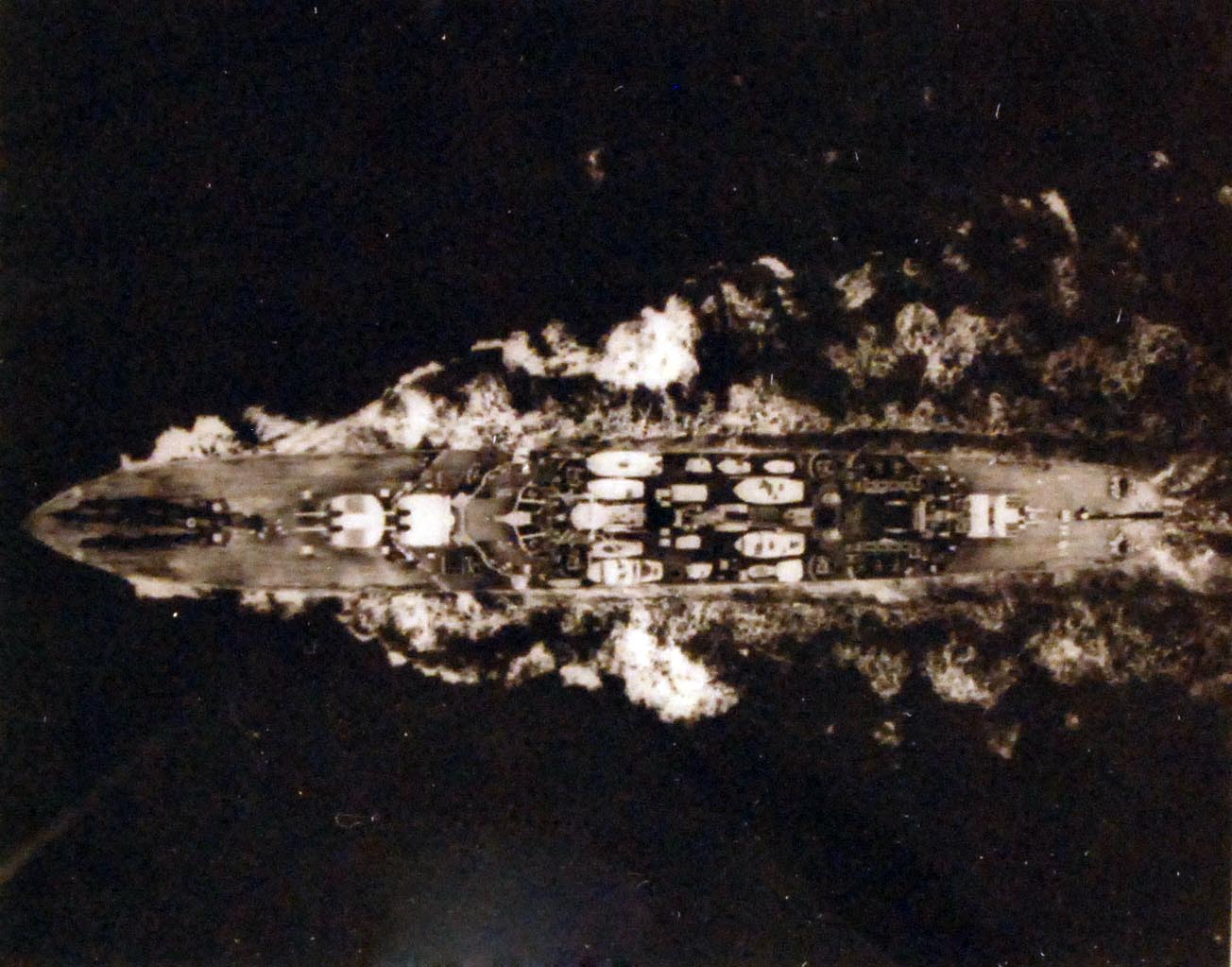
French training cruiser, Jeanne D’Arc, off the coast of Oahu, Hawaii. Aerial view taken in December 1955. 80-G-686520
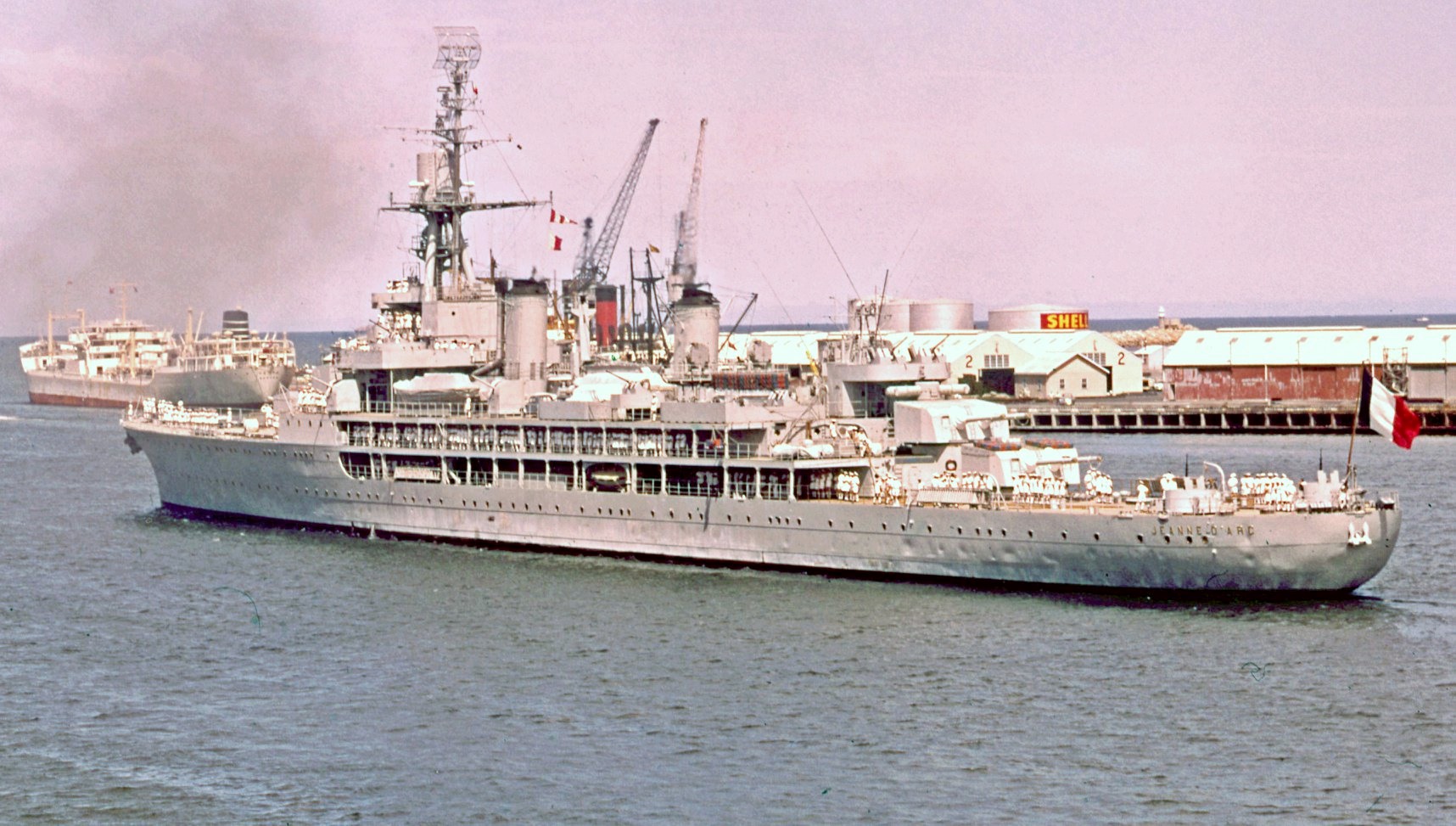

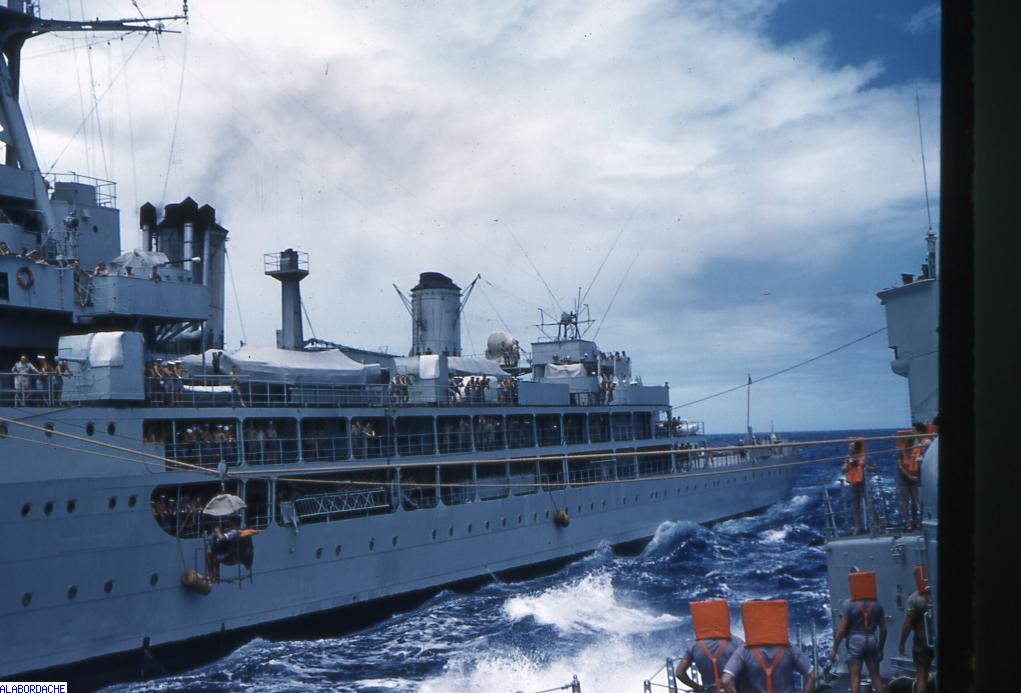
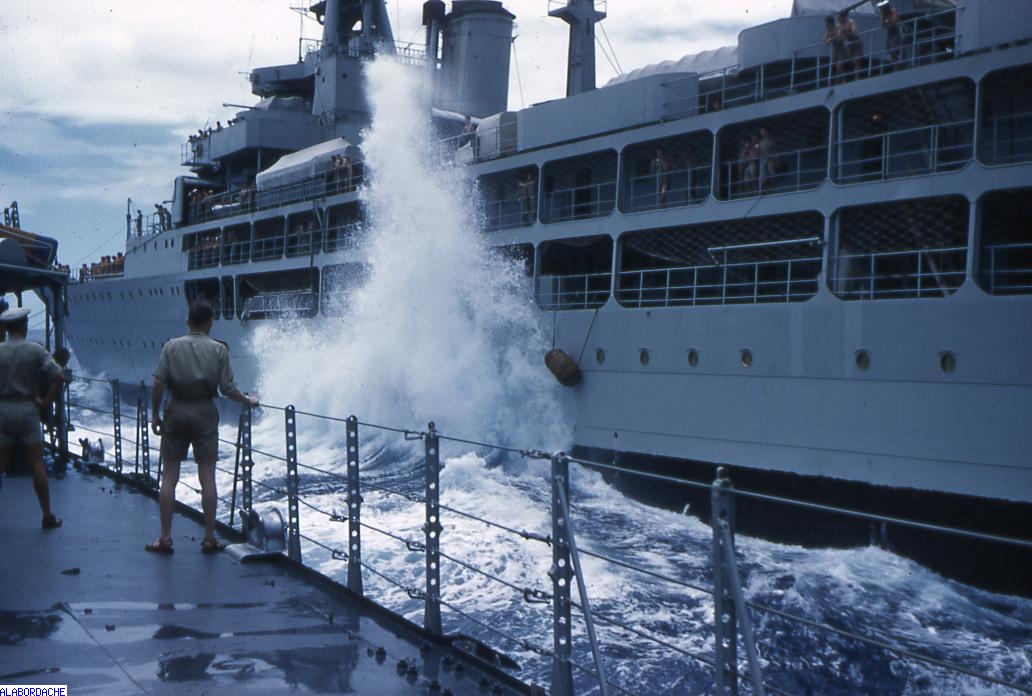
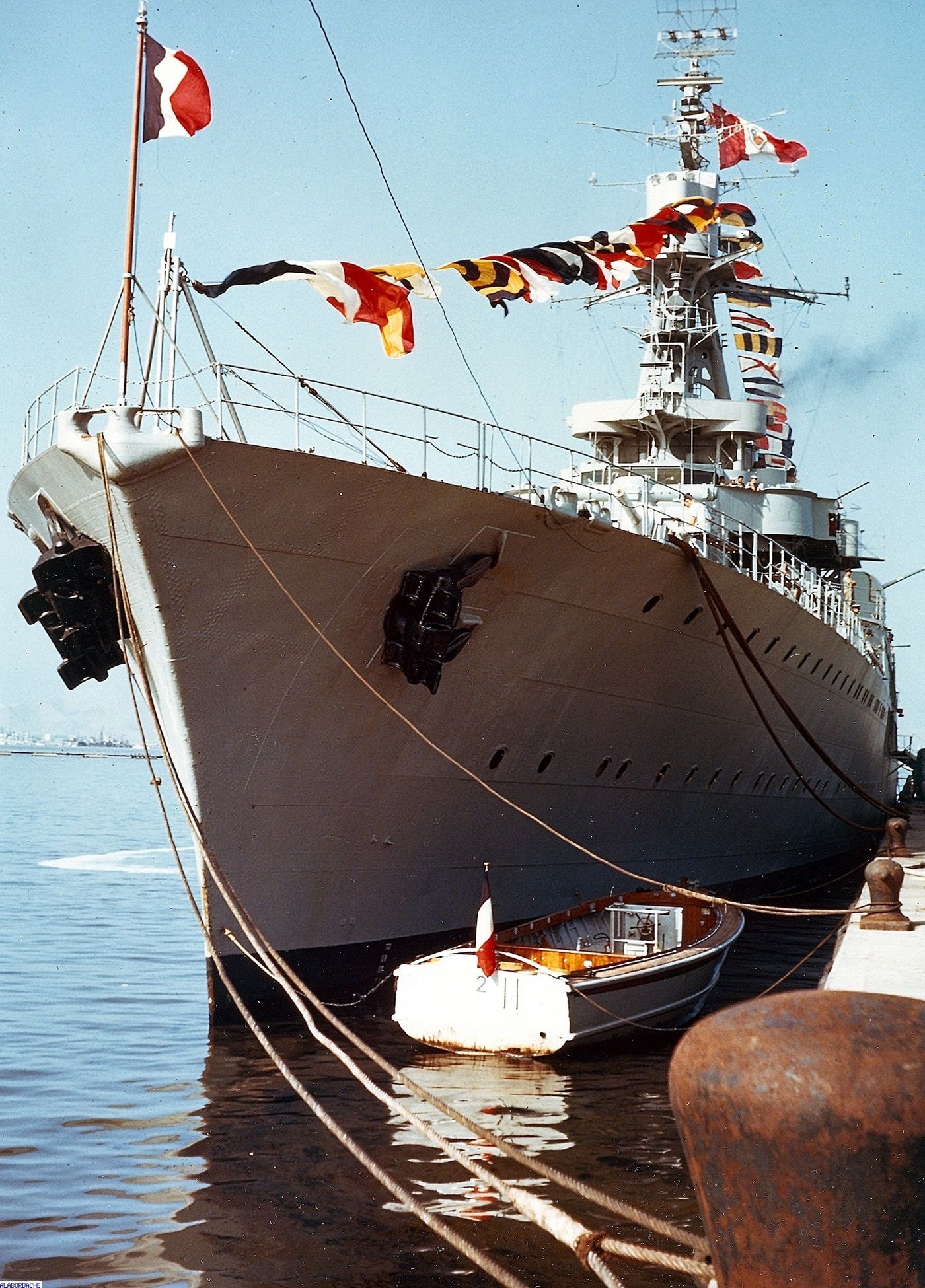




 In February 1963, while off Japan and headed towards Hawaii, she survived a dreaded “Three Sisters” event– three rouge waves back to back. Dubbed “Trois Glorieuses” in French parlance, the event was witnessed by her escorting aviso, Victor Schoelcher, Jeanne rode the trio of 65-foot waves with her bow at as much as a 35-degree incline.
In February 1963, while off Japan and headed towards Hawaii, she survived a dreaded “Three Sisters” event– three rouge waves back to back. Dubbed “Trois Glorieuses” in French parlance, the event was witnessed by her escorting aviso, Victor Schoelcher, Jeanne rode the trio of 65-foot waves with her bow at as much as a 35-degree incline.
Not bad for a ship with 33 years on her hull and on her 27th midshipman cruise.
However, all good things come to an end.
On 20 September 1961, the French Navy christened the 13,000-ton helicopter cruiser La Résolue, but that was just a placeholder name. This new vessel once fitted out, was to be able to take over Jeanne’s mission for a new generation of French officers.
At that, our Jeanne was withdrawn from service and her name struck, and on 16 July 1964, La Résolue became Jeanne d’Arc (R97).
Epilogue
Jeanne d’Arc (R97) would surpass her namesake’s record, covering 44 midshipmen cruises before she was removed from service in 2010.
While the French have had no less than seven ships to carry the name of the fighting saint going back to 1820, the current naval list does not.
Still, she is remembered in maritime art.
Ships are more than steel
and wood
And heart of burning coal,
For those who sail upon
them know
That some ships have a
soul.
If you liked this column, please consider joining the International Naval Research Organization (INRO), Publishers of Warship International
They are possibly one of the best sources of naval study, images, and fellowship you can find. http://www.warship.org/membership.htm
The International Naval Research Organization is a non-profit corporation dedicated to the encouragement of the study of naval vessels and their histories, principally in the era of iron and steel warships (about 1860 to date). Its purpose is to provide information and a means of contact for those interested in warships.
With more than 50 years of scholarship, Warship International, the written tome of the INRO has published hundreds of articles, most of which are unique in their sweep and subject.
PRINT still has its place. If you LOVE warships you should belong.
I’m a member, so should you be!






